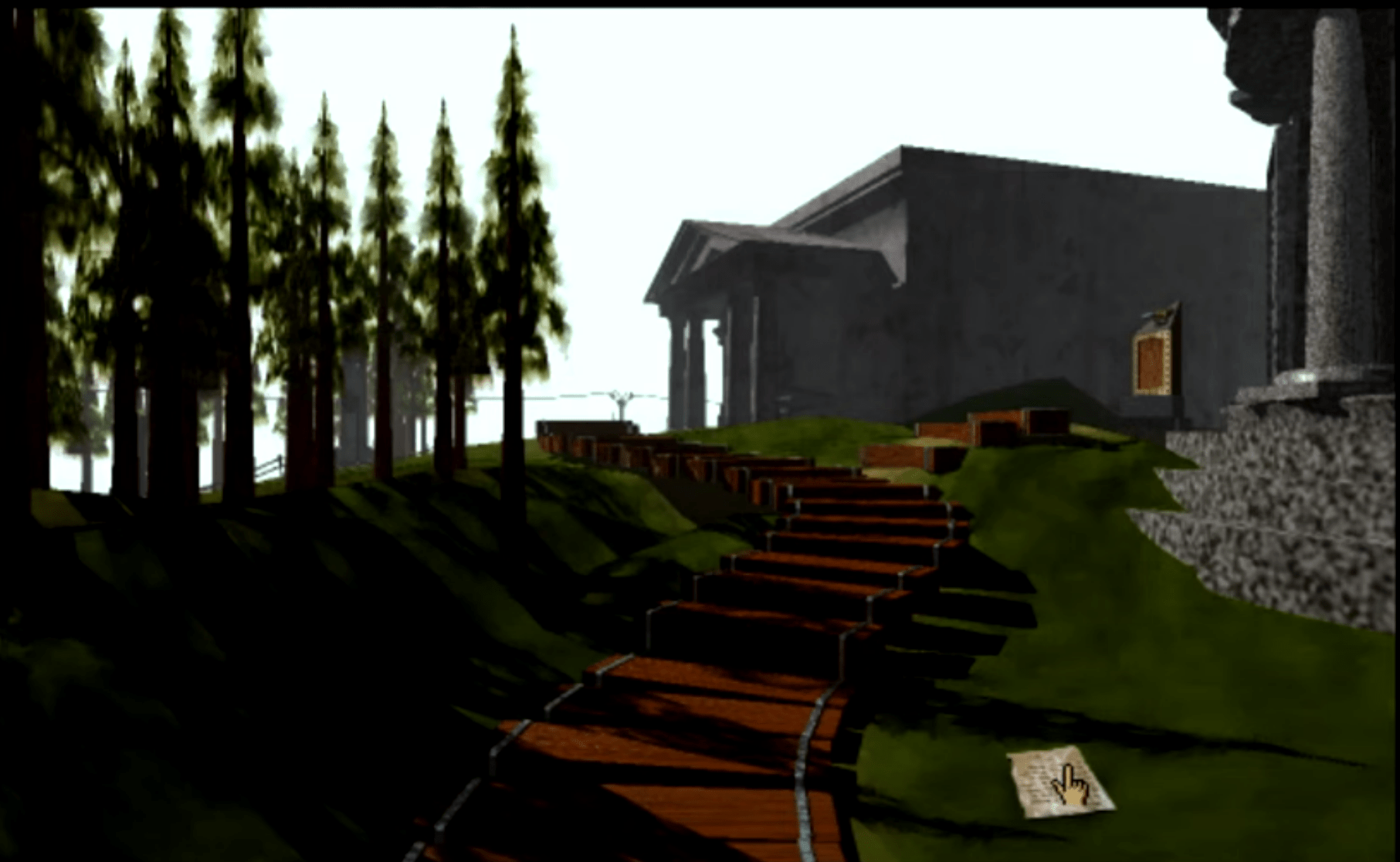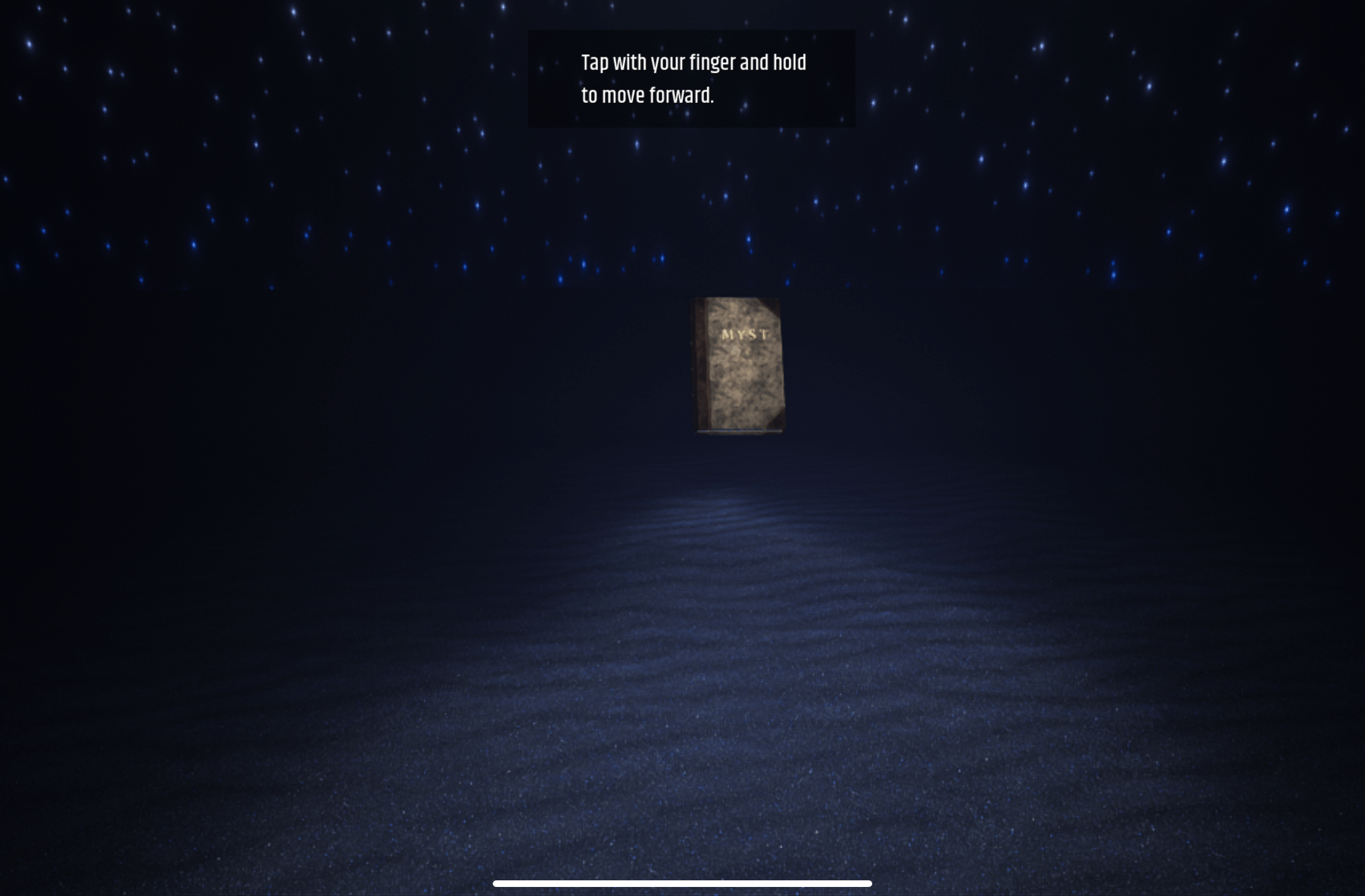Myst is a first-person adventure mystery game developed by Cyan, Inc., originally released in 1993 for Mac. It has since expanded to most platforms (PC, consoles, and even VR/mobile after a 2023 remaster). I played the remaster (free trial) on iPad. Myst’s puzzles rely on knowledge throughout the island—one must explore to discover puzzles and clues to unlock the island’s embedded narrative. Myst’s breadthwise exploratory freedom contributes positively to the game’s experience as a cohesive walking simulator with difficult puzzles that feel satisfying once solved—but sometimes its oversights lead to frustration that feel unresolvable without exterior guidance.
Myst’s puzzle system and embedded story engage players quickly: the opening sequence and lack of guidance forces players to explore to discover objectives and understand the island’s components. Myst’s primary mechanic of scattered clues and puzzles creates a dynamic where players traverse the island, gaining familiarity with it and contributing to the game’s walking-simulator aesthetic. Unfortunately, the game’s reliance on certain clues with only one instance makes it easy for players to miss essential components and reach an impasse. I first explored the entire island base island, and found every available puzzle, but no solutions. Flicking switches and running back and forth, I eventually lacked any instruction towards progress, and had seemingly explored the entire available island. Without any existent Hint System built into the game, I spent an hour exploring and gathering clues before solving any true puzzles. I thoroughly explored every room and book available, taking note of solutions to future puzzles. While I detest walkthroughs, I felt forced to search online to progress. I found a post saying “look for a note lying on a rock near the path.”

This presents the first form-factor complaint I’ve had for a game suggested in class: Myst’s mobile movement system prevents rotating the camera while moving and is difficult to move in slow paces. As such, environmentally obscure clues or time-sensitive tasks become tediously frustrating. While environmental integration adds to the Island’s wonder, this note was an essential building block to start any puzzles and was originally intended to be found easily to guide the player; the obfuscating rock was added in the remake, not the original 1993 version, in which the note was obviously lying on the ground; developers made it harder to find in the remake, likely for the sake of environmental immersion and fidelity, but overlooking gameplay impacts.

This note provides essential guidance for progress: following the note eventually informs the player of how to (otherwise unintuitively) solve the rest of the island’s puzzles. The note initiated a chain of events in which I went to each puzzle (having already familiarized myself with them earlier) and quickly reached solutions to finally progress. From a developer perspective, I would’ve fought for more cognizance of the mobile movement mechanics, and/or a hint system, to prevent players from missing something essential to start solving any puzzles.
Once I actually started solving puzzles, the act was extremely satisfying: Myst’s integrated puzzle system requires players to deeply explore, leading to a loop of exploration to find puzzles and solutions, contemplation of the puzzles’ meanings, and then gratification after using clues to solve a puzzle elsewhere. As such, individual puzzles require notable effort, which easily fulfil players’ psychological need for achievement. Time spent exploring contributes towards multiple puzzles, making the players’ arcs related to an individual puzzle feel short, since puzzles get worked on in parallel.
Most satisfying about the game’s puzzles is their integration into the world: solving one may turn on electricity to another building or accompanying audio cues immerse the player into the fantasy. Every puzzle impacts the player/island, narratively establishing that one’s actions have consequences and impacts.

Ultimately, the difficulty of Myst’s puzzles, and necessity to vastly explore in order to solve them establishes the game as an immersive experience filled with moments of triumphs—but also of pain. Some puzzles aren’t inherently difficult to understand what to look for to solve, but become tedious to solve due to external factors such as hidden clues and locked progression. While Myst could benefit from an embedded hint system, more consideration for all its published platforms, and I would personally opt for multiple instances of clues for a puzzle (instead of each puzzle having 1 simple solution and 1 location to find said solution), Myst’s rewards for puzzle solution—gleaning more from the narrative, or watching your actions alter the world—establishes Myst as a generally fulfilling experience, despite its weaknesses.



